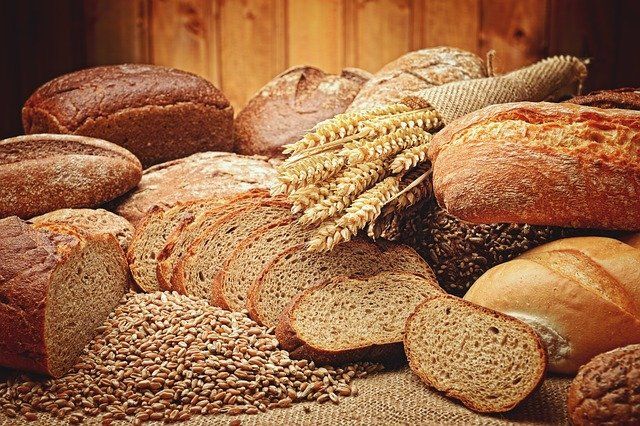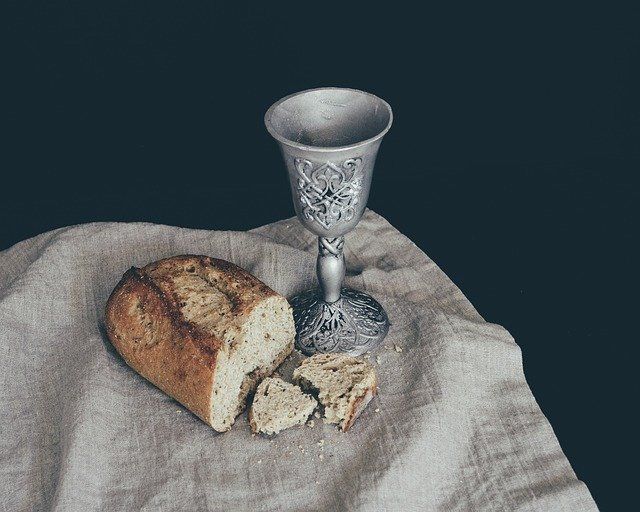The Christian thirsts for the nearness of Christ. This should not be difficult to understand. We know what it is to be close to our loved ones. That is why families gather at festive times of the year and for birthdays and anniversaries. A sense of closeness, and of connection, deepens and strengthens natural bonds and relationships. So it is with Christ. Jesus’ great name, Immanuel (‘God with us’), asserts his determination to be with his people.
This presence was established in the incarnation. Through his birth, God the Son took human nature, and assumed our flesh. He lived among us, was tempted in all points as we are, was touched with the feeling of our infirmities, learned obedience through the things that he suffered, and was faithful unto death. His presence was affirmed, even after his bodily departure, both by the sending of the Holy Spirit to be the indwelling Helper of believers in this life (John 14:26), and by the promise of his bodily return. His presence is signified and sealed in the Lord’s Supper, for the essence of the Supper is that he comes to commune with us and nourish us inwardly in the act of faithful participation.
Inevitably a question arises: in what way is Christ present with us in the Supper? He is, after all, in heaven, in his risen body, ruling as King of kings at the right hand of the Father’s majesty. How, then, does he presence himself with his people as, in a million places around the world, they come to the Table and commune with their Saviour? Is there a real presence of Christ?

Jesus is always with his people spiritually
It is important for our encouragement and comfort to be clear that Jesus is really and objectively present with believers at all times. This is true even when, subjectively, we may feel left alone, perhaps by reason of doubt, sin or even things as mundane as sickness or tiredness. The Son of God is present with his people in a personal way. It is a loving, gracious, caring, guiding presence. He has told the church in the world, ‘Lo, I am with you always, even to the end of the age’ (Matthew 28:20).
His presence is not a figment of our imagination. It is a real presence, to which believers are made sensitive by faith. A heart changed and renewed by the gospel knows and sees the presence of Jesus with the eyes of understanding. Remember how Moses ‘endured as seeing him who is invisible’ (Hebrews 11:27). The same Holy Spirit who regenerates human nature and converts sinners to Christ perfectly represents Christ in and to believers.
Jesus feeds his people spiritually
It is also important to remember that the Lord Jesus Christ feeds his people spiritually, not only by means of the Lord’s Supper, but also through the other means of grace. He teaches this very clearly in his ‘bread of life’ sermon (John 6:22-59).

In this passage, we are commanded to feed on Christ. There is no reference here to the Lord’s Supper, but rather to believing, trusting and closing with Christ in terms of personal faith. ‘Most assuredly,’ says Jesus, ‘unless you eat the flesh of the Son of Man and drink His blood, you have no life in you … It is the Spirit who gives life; the flesh profits nothing. The words that I speak to you are spirit and they are life’ (John 6:53,63). We feed on him as the bread of life by believing in him, receiving the truth of his word, loving him, keeping his commandments, and rejoicing unto eternal life.
Jesus communes with his people spiritually
Jesus, then, is present with his people constantly. He feeds them constantly. He does these things quite apart from the Lord’s Supper. But it is in the Holy Supper that the presence of Christ and our feeding on Christ come together in a particularly vivid way. In the Supper, the spiritual feeding and the sense of his presence are both represented and stimulated by eating and drinking the visible symbols of his atoning death. How is Jesus present in the Lord’s Supper? We must first correct some common misapprehensions.
When Christ says, ‘This is My body … My blood,’ it does not mean that he is, or becomes, the bread and wine (the Roman Catholic doctrine of transubstantiation). Nor does it mean that Jesus is somehow ‘in, under, and along with’ the elements, even if they still look, feel and taste like bread and wine (the Lutheran doctrine of consubstantiation). But if neither of these ideas is true, what did Jesus mean when he said, ‘This is My body?’

Firstly, Jesus is present spiritually. The bread and wine are no more the literal flesh and blood of Jesus, than are a ‘vine’, or a ‘door’ (John 15:1; 10:9). The Bible is full of figurative expressions that vividly illuminate the person and mission of Christ. Philip Henry, the father of the famous commentator Matthew Henry, wrote a lovely book in 1691 on the way that Christ is presented to us in Scripture under no fewer than thirty-nine such figurative expressions! We must therefore reject any idea that the Lord is present spatially in transubstantiation, or present with the elements in consubstantiation.
What is happening in connection with the bread and wine in the Supper is that Christ is really present, spiritually and personally to believers, in the faithful administration and reception of the sacrament. Thus Charles Hodge observes, ‘He who receives the cup in faith, receives the covenant of which the cup is the pledge; likewise he who eats the bread in faith receives the benefits under the covenant of Christ’s body broken for sin.’
A sound doctrine of the Lord’s Supper has far-reaching practical implications for the way in which we come to the Table and the way we go from it to live for Christ. Let us consider some of them.
A spiritual exercise
Firstly, attendance at the Lord’s Table is a profoundly spiritual exercise. We must grasp that this is no mere ritual, but a solemn and vital act of faith in which God in Christ is present to work in us ‘both to will and to do of his good pleasure’. There is spiritual food to be eaten. Christ is the true meat and drink that endures for ever, and we feed upon him by faith as we contemplate his person, his eternal purpose and his saving work. There is a spiritual work accomplished as the Holy Spirit, sent by Christ, is imparted in fresh measure to believers. There is a spiritual statement made as, by faith, Christ is both received and proclaimed as the only Saviour of sinners.

A blessed exercise
Secondly, to attend the Lord’s Table is a blessed exercise. It is a ‘cup of blessing which we bless’, says Paul (1 Corinthians 10:16). We are to come expecting blessing. We come to meet with Christ, to confess Christ, to grow in the grace of Christ. Jesus is present and calls us to focus upon his death and his victory over sin and the grave. It is as if his whole being and ministry is telescoped into this one sacrament. From virgin birth, to earthly life and ministry; to death and resurrection and heavenly rule; to bodily return in glory and judgement; the incarnate Son meets us at his Supper. The heart of the gospel is laid out in symbol on the Lord’s Table.
Here we see our need and his provision; our response and his assurance; our hope and his promise. Although in taking the symbols of the dying Jesus we proclaim his death, we actually extol his life and declare him the life-giver. We actually receive the life he gives. In the midst of death, we find life. We look at the cross, we see the plains of heaven, and rejoice with joy unspeakable and full of glory.
A mandatory exercise
Thirdly, if we know the Lord at all, we must come. To be sure, Christ makes his presence known to us in other contexts and at other times. In the Lord’s Supper, however, he communes with us in this special environment of a symbolic meal, conducted publicly, before heaven and the world.
The focus in the Supper is invariably, exclusively, pervasively and magisterially, upon the heart of the gospel. It speaks of our need of a Saviour, the atoning death that Jesus died on the cross, of the sufficiency of his sacrifice for sin, and of our consequent relationship to him. It bears perpetual witness to his everlasting covenant and promise, his gift of redemption and eternal life, and his coming again to take his people to glory.
In the Lord’s Supper, the presence of the Lord Jesus Christ is rendered so palpably personal that at the Table we must respond in faith, laying hold on him anew as our Saviour and our Lord. The Lord’s Supper faithfully administered does not allow the communicants to sit back and admire the proceedings with detachment, in the way people sometimes admire a point in a sermon. In the Supper, we face Jesus and he confronts us. This happens in a unique way, because the symbols of his broken body and shed blood bring Christ our Substitute to our souls and call us to embrace him with wholehearted commitment and unalloyed joy. To remain distant from him, in the face of such vivid and immediate directness, is unthinkable. Let us embrace the Saviour while he is near.



